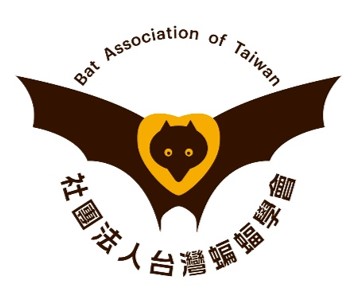蝙蝠研究
2001_利用回聲定位叫聲特性鑑別東亞家蝠、摺翅蝠、台灣葉鼻蝠和台灣小蹄鼻蝠之研究_趙念民
出版年份:2001
研究生:趙念民
分類:碩士論文
題目:利用回聲定位叫聲特性鑑別東亞家蝠、摺翅蝠、台灣葉鼻蝠和台灣小蹄鼻蝠之研究
Title:Identification of Pipistrellus abramus, Miniopterus schreibersii, Hipposideros tecasensis, and Rhinolophus monoceros using echolocation call charaters
摘要:
過去台灣有關蝙蝠的研究,多半集中在分類、生殖、活動模式、食性和行為,對於蝙蝠的回聲定位(echolocation)方面的研究資料,則十分缺乏。本研究透過使用Anabat II蝙蝠偵測系統,收集東亞家蝠(Pipistrellus abramus)、摺翅蝠(Miniopterus schreibersii)、台灣小蹄鼻蝠(Rhinolophus monoceros)及台灣葉鼻蝠(Hipposideros terasensis)共四種蝙蝠的回聲定位叫聲(echolocation call),以分析這四種蝙蝠回聲定位叫聲的種間差異,同時研究其回聲定位叫聲的特性。
四種蝙蝠之中,叫聲頻率最高的是台灣小蹄鼻蝠,最低的是東亞家蝠。東亞家蝠回聲定位叫聲(FM/CF型)的最高頻率為53.30±5.30 (平均值±標準差)kHz,最低頻率為46.74±1.94 kHz,持續時間為5.97±1.53 msec,頻率範圍為6.55±4.29 kHz,而頻率改變率為2.65±2.21 kHz/msec。摺翅蝠回聲定位叫聲(FM/CF型)的最高頻率為65.12±12.24 kHz,最低頻率為49.71±1.48 kHz,持續時間為3.62±2.06 msec,頻率範圍為15.42±11.79 kHz,而頻率改變率為9.52±7.95 kHz/msec。台灣葉鼻蝠回聲定位叫聲(CF/FM型)的最高頻率為68.16±0.86 kHz,最低頻率為61.50±8.72 kHz,持續時間為11.27±4.88 msec,頻率範圍為6.66±8.87 kHz,而頻率改變率為4.67±3.19 kHz/msec。台灣小蹄鼻蝠回聲定位叫聲(FM/CF/FM型)的最高頻率為112.55±1.65 kHz,最低頻率為89.57±18.03 kHz,持續時間為34.30±9.13 msec,頻率範圍為22.98±17.75 kHz,而頻率改變率為7.70±4.20 kHz/msec。
台灣小蹄鼻蝠(效率65 %)與台灣葉鼻蝠(效率39 %)屬於高回聲定位叫聲效率的蝙蝠,東亞家蝠(效率12 %)與摺翅蝠(效率11 %)屬於低回聲定位叫聲效率的蝙蝠。回聲定位叫聲效率高的蝙蝠與低效率的蝙蝠比較,前者具變異較小的最高頻率,而後者具有變異較小的最低頻率。當利用GLM模式分析,並做唐肯氏多範圍檢定(Duncan’s multiple-range test)時,四種蝙蝠在最高頻率、最低頻率、持續時間、頻率範圍和頻率變動率方面,具有顯著差異(p<0.05)。另使用此五項變數(東亞家蝠與摺翅蝠採用type A)做典型鑑別分析(canonical discriminant analysis)時,結果瑪氏距離(Mahalanobis distance)的平方從12.01(東亞家蝠A型和台灣葉鼻蝠蝠)到197.80(東亞家蝠A型和台灣小蹄鼻蝠),所有的距離都呈現顯著(p<0.01)。顯示四種蝙蝠可以藉由這幾種聲學變量,加以區分出來。使用蝙蝠的回聲定位叫聲在種類識別上,確有其可行性。不過,在考量到生態環境與地理族群差異,建議使用蝙蝠的回聲定位資料在種類識別上,還是應該要保持謹慎的態度。
Abstract:
Most studies on bats in Taiwan concentrate in taxonomy, reproduction, activity patterns, and behaviors. However, researchers seldom focus to understand the patterns and functions of bat echolocation in Taiwan. Using a sophisticated Anabat II bat detector system, I was able to collect echolocation calls of bat species including Pipistrellus abramus, Miniopterus schreibersii, Rhinolophus monoceros, and Hipposideros terasensis in southern Taiwan.
Between these four bat species, R. monoceros has the highest frequency and P. abramus has the lowest frequency of echolocation calls. The echolocation calls that used by P. abramus belong to FM/CF type, with the maximum frequency at 53.30±5.30(mean ±S.D.)kHz, the minimum frequency at 46.74±1.94 kHz, the duration time at 5.97±1.53 msec, the frequency range at 6.55±4.29 kHz, and the frequency change rate at 2.65±2.21 kHz/msec. The echolocation calls that used by M. schreibersii belong to FM/CF type, with the maximum frequency at 65.12±12.24 kHz, the minimum frequency at 49.71±1.48 kHz, the duration time at 3.62±2.06 msec, the frequency range at 15.42±11.79 kHz, and the frequency change rate at 9.52±7.95 kHz/msec. The echolocation calls that used by H. terasensis belong to CF/FM type, with the maximum frequency at 68.16±0.86 kHz, the minimum frequency at 61.50±8.72 kHz, the duration time at 11.27±4.88 msec, the frequency range at 6.66±8.87 kHz, and the frequency change rate at 4.67±3.19 kHz/msec. The echolocation calls that used by R. monoceros belong to FM/CF/FM type, with the maximum frequency at 112.55±1.65 kHz, the minimum frequency at 89.57±18.03 kHz, the duration time at 34.30±9.13 msec, the frequency range at 22.98±17.75 kHz, and the frequency change rate at 7.70±4.20 kHz/msec.
R. monoceros(duty cycle 65 %)and H. terasensis (duty cycle 39 %)are the high duty cycle bats. P. abramus(duty cycle 12 %) and M. schreibersii(duty cycle 11 %)are the low duty cycle bats. High duty cycle bats have more stable maximum frequency of echolocation calls than low duty cycle bats. Low duty cycle bats have more stable minimum frequency of echolocation calls than that of high duty cycle bats. I compared the differences in echolocation calls emitted by these four bat species. I used the Dumcam’s multiple-range test to confirm these echolocation calls have significant differences (p<0.05) in their maximum frequency, minimum frequency, frequency change rate, frequency range and duration of time. Similarly, I also used these five variables to run canonical discriminate analysis. The Mahalanobis distance’s between pair of species varied from 12.01 (P. abramus A type and H. terasensis) to 197.80 (P. abramus A type and R. monoceros); all distances were statistically significant (p<0.01). These results confirm the fact that bats’ echolocation calls can be used to clearly identify individual species, which is not only possible but also practicable. However, considering the possibilities of some habitat influence and geological/genetic difference, using echolocation for identification species should be done more cautiously.
